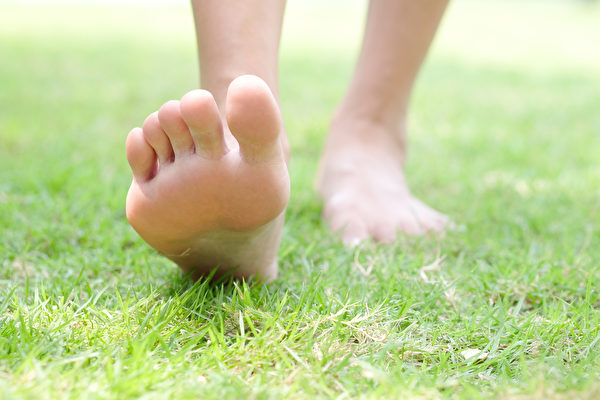Green Space Is Free Medicine, Can Improve Many Chronic Diseases
Do you like green spaces? The British Medical Journal published a two-year study in Finland that revealed that frequent visits to green spaces such as forests, gardens, parks, and meadows can help people reduce the use of prescription medication for depression, insomnia, high blood pressure, and asthma. These medicines are mainly used to treat common and potentially serious health problems.
The study analyzed about 7,300 people, and the results found that compared with those who visited green spaces less than once a week, those who visited green spaces three to four times a week were 33 percent less likely to use psychotropic medication, 36 percent less likely to use antihypertensive medication, and 26 percent less likely to use asthma medication.
Exposure to natural environments is widely believed to be beneficial for human health, and this study actually provides another piece of evidence. Dr. Gyaltsen Lobsang, a preventive medicine expert and director of Dr. Lobsang Preventive Medicare Clinic, said that he often encourages people to go into the forest; this advice is even included in his “prescription” because nature has so many health benefits to offer.
1. Reduce chronic inflammation
Plants release a lot of oxygen and produce a lot of bioactive substances during photosynthesis, which helps you resist oxidation and reduce chronic inflammation.
Many people suffer from chronic inflammatory conditions. When the cells in the body do not get enough oxygen, the hypoxic cells will emit “reactive oxygen species,” which can damage cells and organs, resulting in body oxidation and chronic inflammation. Chronic inflammation will then lead to weakened immunity, making it difficult for the body to fight against foreign viruses and bacteria.
Hypoxemia (insufficient oxygen in the body) can be caused by environmental, physiological, and pathological factors. Lobsang pointed out that symptoms such as muscle stiffness, poor sleep, and dizziness may indicate a lack of oxygen in the body.
2. Boost immunity and prevent cancer
People can also breathe in phytoncides when they are in green spaces, especially forests. Phytoncides, also known as “exterminators of the plant,” are chemicals that plants release into the air with antimicrobial properties to protect themselves from insects.
A study found that the activity of natural killer (NK) cells in the body increased by about 50 percent after people breathed in phytoncides while walking in nature. These cells can kill tumor cells and virus-infected cells in the body.
Lobsang believes that the air in the forest can help cleanse the lungs. Therefore, he will ask patients, especially lung cancer patients, to get in touch with nature, preferably in areas with forests, at least two to three times a month.
3. Relieve stress, improve mood, and regulate autonomic nervous system
A natural environment filled with plants promotes the relaxation of the body and mind. The director of Lohasiinfra Clinic in Taiwan, Shih-Heng Chang pointed out that there are more sounds in the forest than at the seaside, such as the chirping of insects and birds, and the sound of the wind. These sounds are called white noise, and they can block out real noise, helping to relieve stress, and are more relaxing than total silence.
Studies have also found that forest landscapes can reduce psychological stress and mental fatigue, and induce positive emotions, thereby improving anxiety, depression, and anger. This has preventive and therapeutic effects on depression. At the same time, forest bathing also helps to reduce stress hormones such as adrenaline and cortisol, thus relieving people’s stress.
Stress is also closely related to autonomic nervous system disorders; forest bathing can increase the activity of the parasympathetic nerves and reduce the activity of the sympathetic nerves, allowing the autonomic nervous system to return to a stable and balanced state. Consequently, sleep quality can also be improved.

4. Lower blood pressure and manage diabetes
Studies have found that the forest environment can effectively lower blood pressure, reduce pulse rate, and improve cardiac-pulmonary and metabolic functions, which can help improve the quality of life of pre-hypertensive or hypertensive patients.
Speculated reasons why forests may reduce blood pressure include the positive effects of phytoncides on the body, and the modulating effect of the forest environment on the autonomic nervous system.
Walking in a forest environment increases adiponectin, which helps lower blood glucose levels in diabetic patients. High levels of adiponectin have been linked to resistance to diabetes, weight loss, and the prevention of atherosclerosis.
5. Manage ADHD and improve concentration
In addition to improving concentration in the general population, natural environments can also enhance attention in children with attention deficit hyperactivity disorder (ADHD). A walk in the park is sufficient to elevate concentration in children with ADHD.
Lobsang also found in his clinical treatment that the symptoms of 80 to 90 percent of children with ADHD or autism can be gradually improved when the children are exposed to nature.
6. Manage asthma and improve lung function
Asthma has been linked to exposure to air pollution. For children with allergic diseases such as asthma, exposure to a forest environment can help improve symptoms. A study published in the European Respiratory Journal showed that children who grew up with increased exposure to green spaces had improved respiratory health and often had better lung function.
Lobsang believes that plants are very effective in purifying the air, saying that “plants are the best air purifiers.” He pointed out that many studies have found that simply having a lot of plants (such as sansevieria) indoors can help clean the air.
7. Improve eye health
Looking at a green environment after intense eye use can relax the eyes. Chang explained that green light’s wavelength can relax the eye muscles. The eyes will directly affect the brain, and the discomfort of the eyes will cause pain in the head. Computer vision syndrome refers to the discomfort in the eyes caused by prolonged viewing of the computer, which will extend to the brain, resulting in symptoms such as headache and nausea.
Take off Your Shoes and Perform ‘Earthing’ to Increase Natural Healing Power
When walking into green spaces, it is best to take off your shoes if possible, and step barefoot on grass, dirt, and sand to perform “earthing,” as doing so allows you to receive nature’s medicine—electrons from the Earth’s surface.
Scientist Clint Ober discovered the health benefits of earthing by accident. In his book “Earthing,” co-authored with Dr. Stephen Sinatra and others, it is stated that people live on an electrified planet and live an electrified life—the heart, brain, muscles, nervous system, and immune system are all dynamic electric circuits. The purpose of earthing is to connect the weak current on the surface of the earth with the physiological current of the human botos to restore the body’s electrical balance.

Numerous studies have now documented the many benefits of going barefoot on the ground, including reduced chronic inflammation, pain and stress, improved blood flow, vitality and sleep, enhanced wound healing, and the prevention and treatment of autoimmune diseases.
A case study (pdf) by the International Academy of Clinical Thermography mentioned that an 85-year-old man with severe inflammation and chronic pain woke up stiff and sore every day, and his pain completely disappeared after four weeks of earthing therapy.
Earthing can also speed up the healing of difficult-to-heal wounds in diabetic patients and relieve wound pain.
To maximize the benefits of performing earthing to the body, going barefoot for as little as 30 or 40 minutes daily can significantly reduce pain and stress.
Lobsang said that the body is the structure of energy, and earthing can not only release bad energy from the body, but also massage the soles of the feet at the same time. There are many acupoints on the soles of the feet, such as the Yong Quan acupoint, which is an excellent acupoint for relieving stress, stabilizing emotions, and improving sleep. Additionally, the stimulation of the sole muscles can promote microcirculation.
Lobstang brings his patients to places with clean grass for earthing. In particular, grass that has been exposed to the sun is best. However, people with wounds on the soles of the feet, especially diabetics, have to be careful; they should avoid earthing when there are wounds on the soles of the feet.
In addition, traditional Chinese medicine believes in the concept of the unity of man and nature, and earthing is in line with the concept. Wu Kuo-pin, superintendent of Taiwan Xinyitang Heart Clinic, said that the ground is a part of the Earth (in the Five Elements); the Earth element is associated with the spleen and stomach, and the spleen and stomach are part of the digestive system in traditional Chinese medicine. People can strengthen their spleen and stomach by performing earthing and absorbing the qi of the Earth element. The immune system will improve as the function of the spleen and stomach improves.
Kuo-pin once heard of a case in which a cancer patient recovered from cancer by walking barefoot in the mountains. He emphasized that the energies of the human body, the Earth, and the universe are inherently interconnected. Stepping on the ground with bare feet can adjust the energy of the body, which is beneficial to overall well-being.
